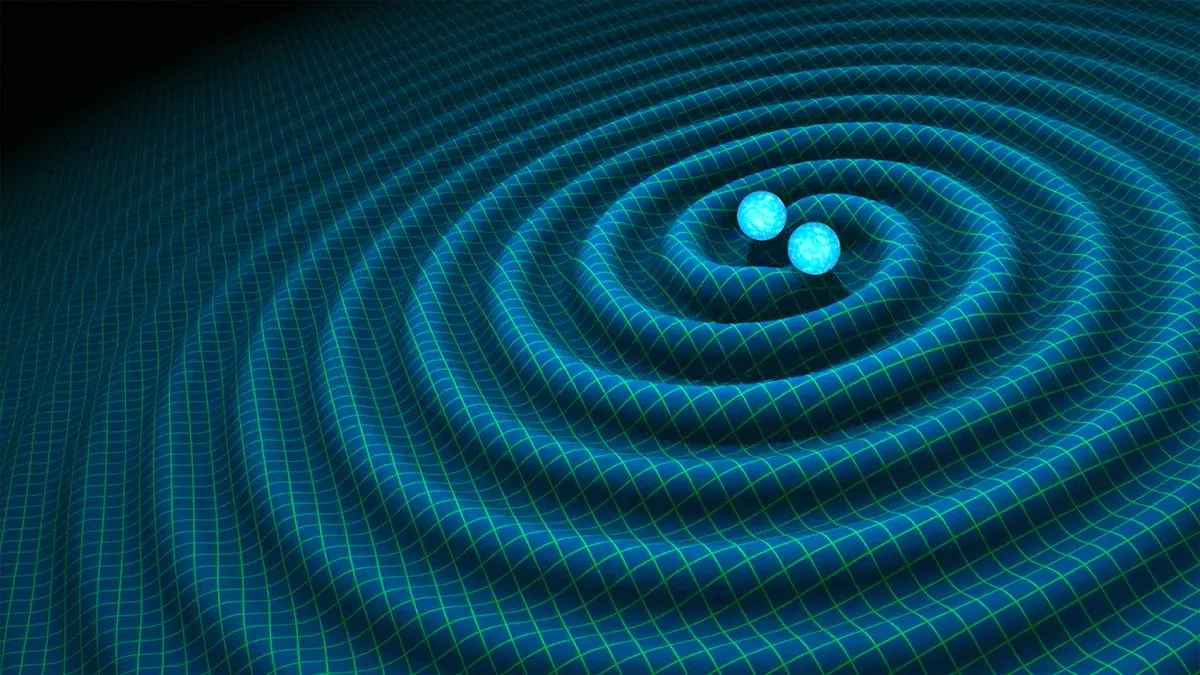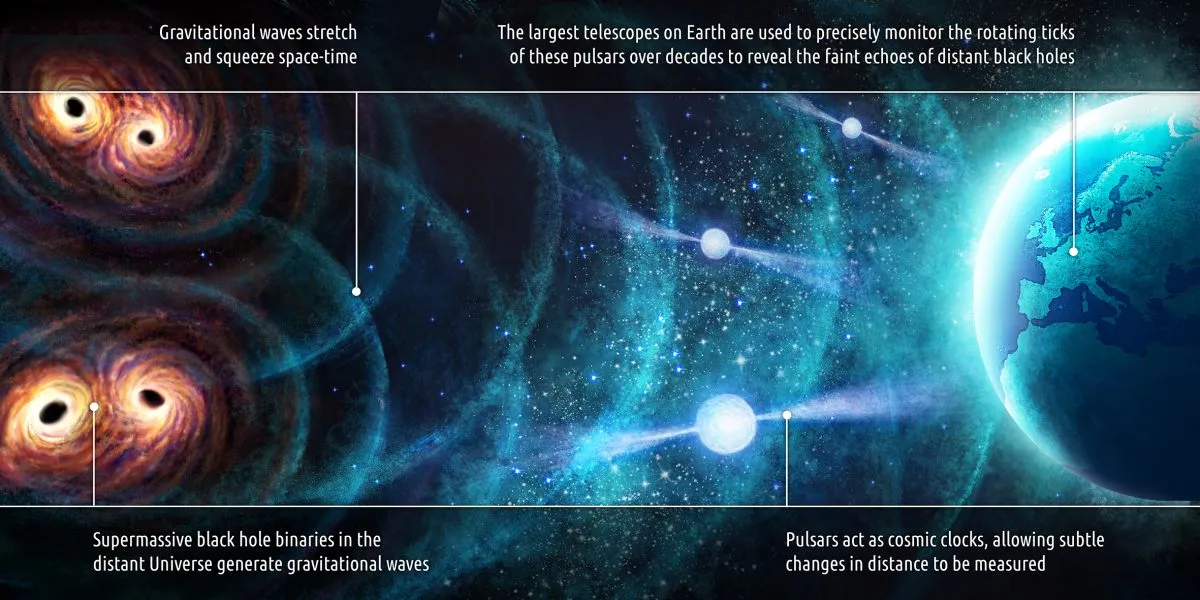An international team of astronomers have, for the first time ever, managed to detect evidence of ultra-low-frequency gravitational waves coming from pairs of supermassive black holes at the centres of colliding galaxies.
Gravitational waves are ripples in space-time that can be produced when enormous objects like black holes orbit each other and collide.
However, gravitational waves are extremely faint and hard to detect.In fact, gravitational waves were only detected for the first time ever in September 2015.

Studying these ripples in spacetime can give astronomers clues about the most massive objects in the Universe, including how they evolve.
This latest study stems from observations made over the last 25 years using six of the world's most sensitive radio telescopes:
- Effelsberg Radio Telescope, Germany
- Lovell Telescope at Jodrell Bank Observatory, UK
- Nançay Radio Telescope, France
- Sardinia Radio Telescope, Italy
- Westerbork Radio Synthesis Telescope, Netherlands

The gravitational waves detected in the study are thought to come from pairs of supermassive black holes at the centres of merging galaxies.
The discovery could help astronomers learn more about the formation and evolution of the Universe and the galaxies that populate it.
It could even uncover some of the secrets of our own Milky Way galaxy, and the origin of supermassive black holes at galactic centres.
The study was conducted by a team of researchers from the European Pulsar Timing Array (EPTA) in collaboration with the Indian Pulsar Timing Array (InPTA),
The EPTA 's goal is observe pulsars – spinning neutron stars that emit radio waves, which pulse like a lighthouse beacon as observed from Earth – with the goal of detecting gravitational waves.
The observations of 25 pulsars across the Galaxy effectively produces a galaxy-sized gravitational wave detector.

"Pulsars are excellent natural clocks," says Dr David Champion, senior scientist at the MPIfR in Bonn, Germany.
"We use the incredible regularity of their signals to search for minute changes in their ticking to detect the subtle stretching and squeezing of space-time by gravitational waves originating from the distant Universe."
Because the wavelengths of the gravitational waves are very long, the frequencies are low, which is why it has taken so long to collect enough data to be able to analyse the signals.
"The results presented today mark the beginning of a new journey into the Universe to unveil some of its unsolved mysteries," says Dr Michael Keith, lecturer at Jodrell Bank Centre for Astrophysics at the University of Manchester.
"We are incredibly excited that after decades of work by hundreds of astronomers and physicists around the world, we are finally seeing the signature of gravitational waves from the distant Universe."
Now the researchers aim to expand the current datasets in an International Pulsar Timing Array, which will involve over 100 pulsars being observed by 13 radio telescopes across the world.
